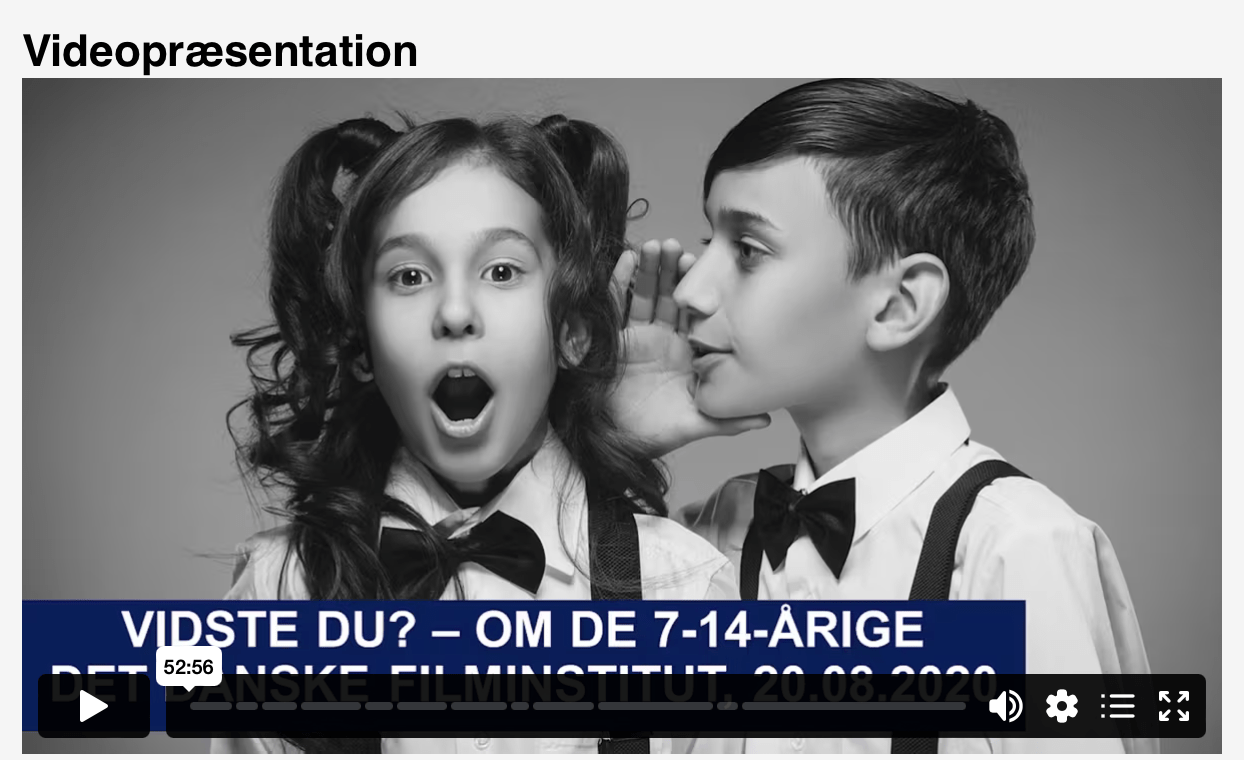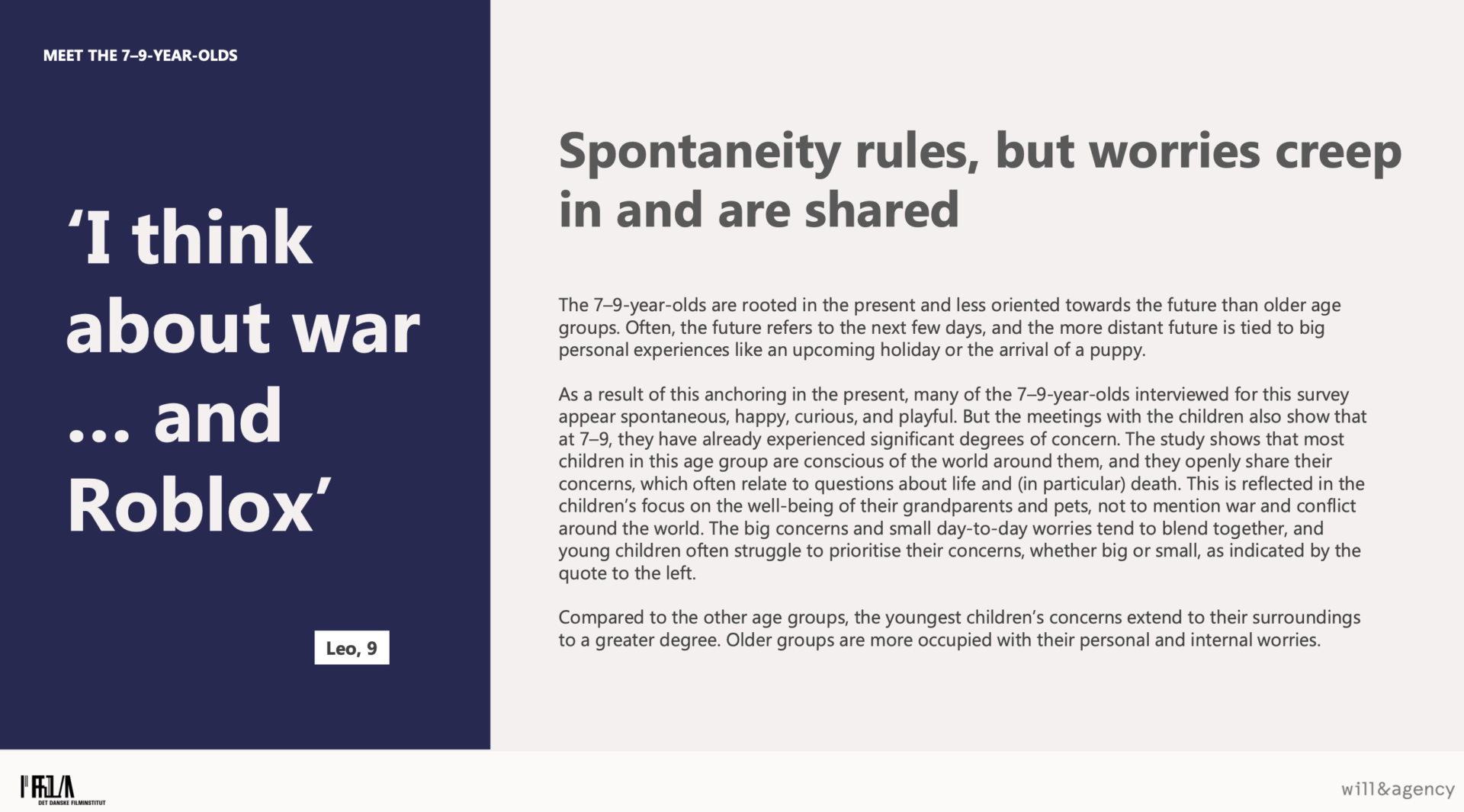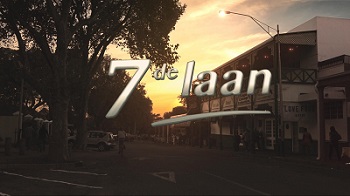Next week The Children’s Media Conference gathers people working with developing, producing and distributing content to children for a three-day programme in Sheffield. The conference is in its 20th edition in 2023, and the varied programme illustrates how all platforms are now in play when thinking about children’s media. There are sessions on everything from business strategies and powering-up your IP over commissioner conversations and creative masterclasses to panel debates with titles such as ‘Public Service RIP?’.

Fig. 1: According to the website of The Children’s Media Conference, the 16th (pre-pandemic) conference in 2019 welcomed 1,250 delegates from across the children’s industries.
Several panels are on ‘understanding kids’, offering research insights on topics such as how gestures can help communicate ideas or on how gaming features in the lives of children. The diversity of the programme points to how content for children comes in many different shapes and sizes in the 2020s and presents specific challenges whether you are trying to target pre-schoolers or teens in different media forms.
An audience-involvement and research-interest turn
During the Reaching Young Audiences project (which started in 2019), it has been interesting to see how still more industry events focusing on children’s content have emerged in the past years and still more reports have addressed how to think of children and young audiences of today. There seems to be a widespread sense that adults just don’t know what children and young audiences would like to watch anymore or how to reach them.
As the RYA project has investigated in the past few years, the many doubts on how to produce appealing content for them or how to best understand their rapidly changing media use have led to what can be regarded as a remarkable ‘audience-involvement turn’, using young audience members as consultants, co-creators, ‘kidnographers’ and ‘junior editors’ or asking their opinion in different forms of advisory ‘youth panels’ during screenwriting, development and production as well as distribution. While much of this is related to specific productions – and the input most often kept inside the production team – one can also argue that there has been a ‘research-interest turn’ with still more reports trying to provide more general knowledge on what small children, tweens and teens are actually like and thinking about today.
Sharing data and approaches through ‘structured industry workshops’
At the launch of the RYA project, we tried to find information about the existing data on children and their media use in Denmark, to get a sense of what film and television commissioners and practitioners build their perceptions of young audiences on and to learn more about what they might like to know before setting out to do our studies. A joint industry/academia workshop in Copenhagen in February 2020 documented how many major Danish players conduct in-house research of their own, but this is rarely shared with others.

Fig. 2: The annual report om media developments from the DR media research department traces many different aspects around media and media use, as illustrated by this ethnographic study in the 2022 report on how Danish 19-22-year-olds describe what characterizes being young today. Screenshot from dr.dk.
The media researchers from the Danish Broadcasting Corporation (DR) publish an annual report (in Danish) on major media developments every year, but also conduct many in-house investigations (e.g. before launching a new initiative such as Minisjang for 1-3-year-olds in 2021), that are not available to others. At the workshop, Nordisk Film shared how they analyse and track particularly family audiences, and the Buster Film Festival told about having a more informal, but continuous dialogue in various forms with Danish children in school visits or feedback sessions. The workshop pointed to the value of sharing data as well as approaches through ‘structured industry workshops’ (Redvall and Sørensen 2021) – and to the fact that everyone would like to see more research across the board which everyone can access and openly discuss.
New reports on children in a changing media landscape
In the 2020s, the Danish Film Institute (DFI) – as a new initiative – started to offer some publicly available studies on the media use of children and young audiences, the first one focusing on the film and series preferences of the 7-14-year-olds. The report was presented to the industry at a packed session at the Film House in Copenhagen which illustrated the general interest in learning more about these young audiences.

Fig. 3: In the 2020s, The Danish Film Institute started making video presentations of the findings of various reports, based on acknowledging that many industry practitioners prefer this way of presenting (or slide shows) to the more traditional written reports. Source: dfi.dk.
While some of the ten main insights from the report might not be that surprising in terms of the overall media use, several findings on how children change their perception of Danish film and television over time interestingly documented major differences between quite particular age groups, and the analysis also traced the interest in specific Danish titles when traveling from the cinema and television to streaming platforms in a rapidly changing media landscape.
7–18-year-olds and their lives with films, series, and social media
The 2021 report was in Danish and targeting the Danish industry, but most recently the Danish Film Institute has started to translate some major reports to also make them available to international readers, such as co-producing partners. This is the case with a new report on 7–18-year-olds and their lives with films, series, and social media, conducted by the design anthropology firm Will & Agency for The Danish Film Institute. The main insights from the report show how the use of content naturally changes remarkably during the large age-span, from the ‘here-and-now’ perspective of the youngest participants to a more reflective approach of the older audience members. The report argues that the entire age group is more interested in characters rather than story arcs and points to how short formats are popular – not the least since it is hard to find time for watching a feature film or a one-hour drama in the busy everyday lives of children today.

Fig. 4: The 2023 report ‘Close-up: A study of 7–18-year-olds and their lives with films, series, and social media’ mixes statements from the 122 participating children, tweens and teens with on-going analysis based on overall themes. This is an example from the section on children’s more general thoughts on the world and their daily lives (DFI 2023: 9).
The 130-page/slide report is based on intentions “to support and strengthen the work with children and adolescents in the film and media industries, at the Danish Film Institute, and amongst practitioners in the fields of cinema culture and film education” (DFI 2023: 4). Since its publication, the findings have e.g. led to discussions of how to think of short vs. long formats in the current support systems as well as in educational materials produced by the DFI. The past years have seen less support for producing short films for children, instead focusing on longer formats and cross-media initiatives. The documented enthusiasm for short formats among young audiences in the report might be a reason to re-evaluate this strategy. Not the least since teachers and others have also pointed out that it is hard to use longer formats for teaching purposes in school settings because of the length of class sessions.
A film has to have at least three good laughs…
The report raises many other issues that ought to also be of interest to international readers, even if the 122 participants in the survey are Danish and the overall focus is on Danish film and television. Currently, the Norwegian Film Institute is conducting a similar study, and there does seem to be good reasons for doing this research – on a regular basis and in different national contexts, potentially offering interesting comparative perspectives across borders and media cultures.
If nothing else, just reading the quotes in the recent DFI report is a good reminder of how being a child, tween or teen is marked by many big as well small thoughts and concerns. As the 9-year-old boy Leo shares, he thinks about ‘war … and Roblox’ (DFI 2023: 9). Or 8-year-old Martin’s statement on choosing a film based on finding “that it has to be something that makes you laugh at least 3 times” (DFI 2023: 13). Or the many moving statements by tweens and teens on trying to find a style, a personality or “who I am as a person” (DFI 2023: 19) – and reflecting on what they watched when they were ‘young’.
An interesting summer read in its own right for anyone with an interest in children in general.
Eva Novrup Redvall is Associate Professor at the University of Copenhagen where she is head of the Section for Film Studies and Creative Media Industries and principal investigator of the RYA research project. She is also a board member of the Danish Film Institute that has published two of the reports mentioned in the blog. https://comm.ku.dk/staff/?pure=en%2Fpersons%2Feva-novrup-redvall(fc809983-e37f-4f44-b71a-a0b1d36295b9).html
References
The Danish Film Institute. (2023). “Close-up: A study of 7–18-year-olds and their lives with films, series, and social media”. Report conducted by Will & Agency for The Danish Film Institute. Copenhagen: The Danish Film Institute. https://dfi.dk/files/docs/2023-05/Close-up%20-%20A%20study%20of%207-18-year-olds%20and%20their%20lives%20with%20films%2C%20series%2C%20and%20social%20media.pdf
Redvall, E.N. and Sorensen, I.E. (2021). “Structured industry workshops as methodology: Researching national screen agencies and policies”. Media Industries, 8(1), pp. 47-66, doi: 10.3998/mij.94.





